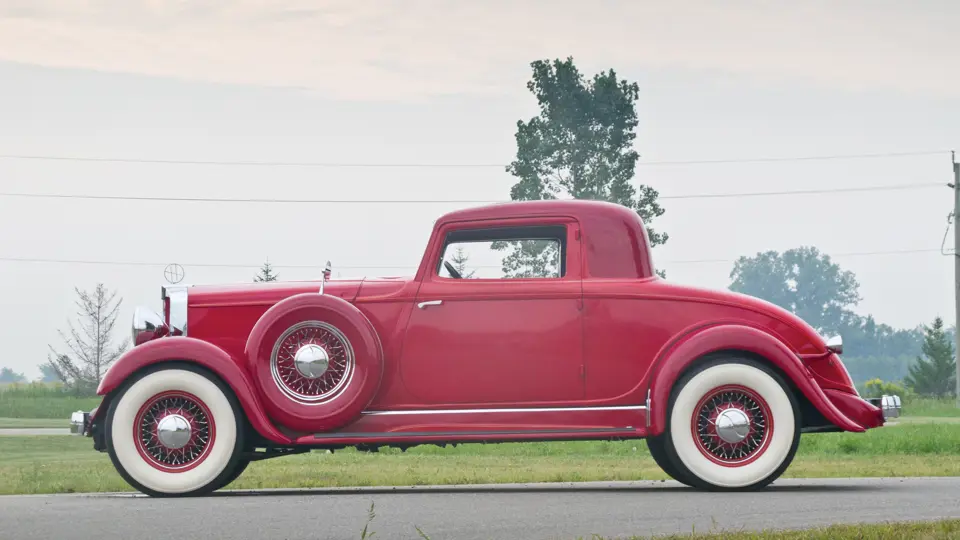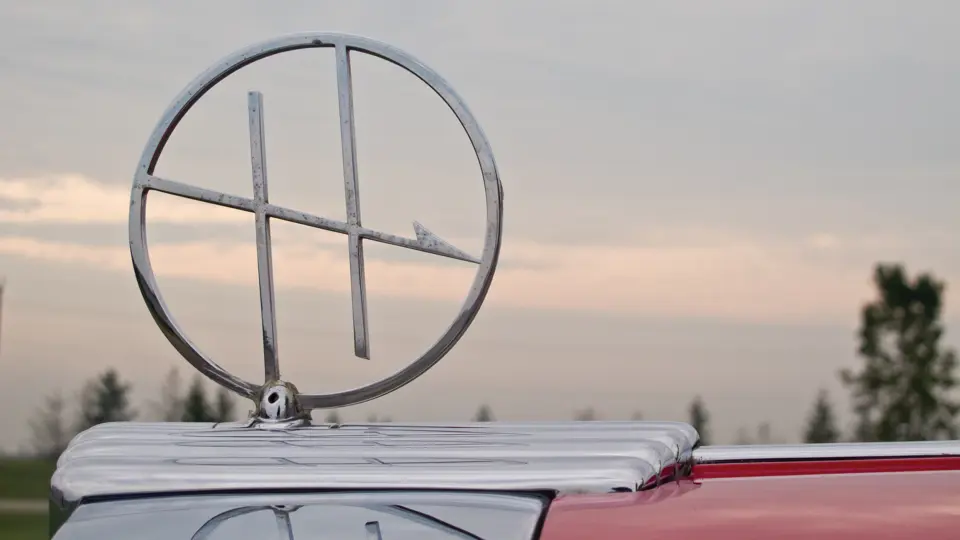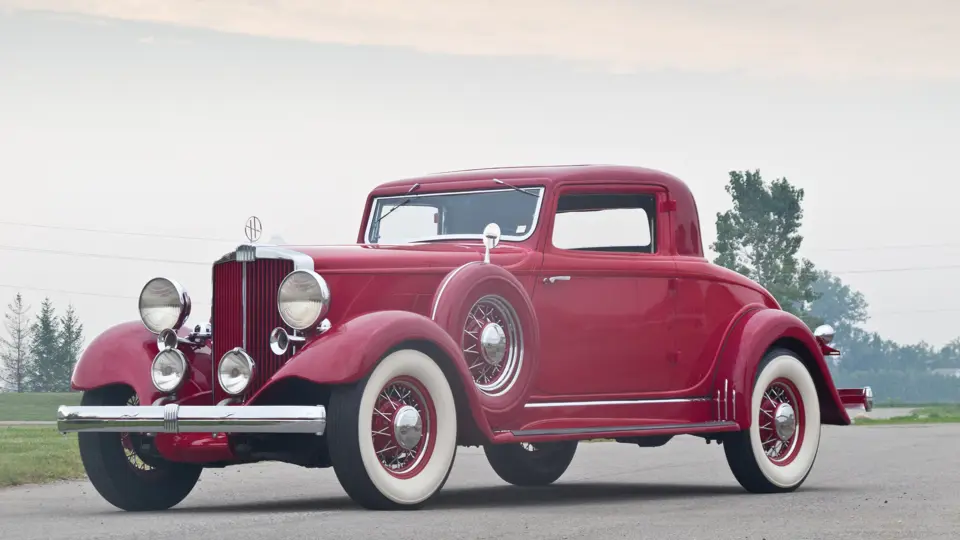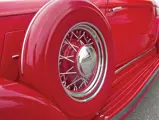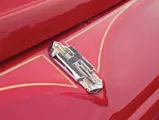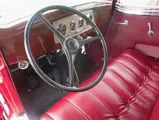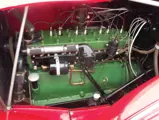103 hp, 279.9 cu. in. L-head eight-cylinder engine, three-speed manual transmission, solid front axle and floating rear with semi-elliptic leaf springs front and rear, four-wheel mechanical drum brakes. Wheelbase: 126"
- Ex-Harrah Collection
- The only known Series-I Coupe from 1932
- First year of the Loewy-designed “cycle fender” styling
The first experimental Hupmobile was completed by Robert Craig Hupp on November 1, 1908. It put out 16.9 horsepower and would soon be known as the Model 20, which was put into production by the Hupp Motor Car Company early the following year. The Model 20 was highly successful and was produced by the thousands until 1913 when it gave way to the Model 32 which had been introduced the previous year. In 1925 the reliable four-cylinder engine was completely replaced by an eight, which was followed by a six in 1926.
In the late 1920s and early 1930s, the Hupmobile lineup offered an ebb and flow of model designations. For 1932 there were four different models, with three being carryovers from the previous year. The Series-F had a 93-horsepower eight and rode on a 122-inch wheelbase. A larger eight of 133 horsepower was offered in the Series-H and V, which rode on 126-inch and 137-inch wheelbases, respectively. Although riding on longer wheelbases and developing higher horsepower, the only bodies offered on the larger eights were a sedan and a victoria, the weight of which negated any additional performance.
The Series-I was the only all-new offering and had a 103-horsepower eight mounted on a 126-inch wheelbase. The Series-I was offered as a factory coupe, cabriolet, sedan or victoria. Of 10,467 Hupmobiles produced in 1932, only 710 of these were the I-series, and according to information gathered by The Hupmobile Club’s official publication, The Hupp Herald, chassis 5404 is the only remaining example.
Like most other manufacturers that matured during the same period as Hupp, the concept of styling became just as important as advancement of engineering. In 1932, Hupmobile introduced all-new designs penned by celebrated industrial designer Raymond Loewy and featured cycle-like front fenders which meld cohesively from the distinctive grille to the wide vee’d belt molding to the sweeping flare of the rear fenders.
An older restoration, chassis 5404 is verified as having been owned by the Harrah Automobile Collection for a period of time. Although not restored in Mr. Harrah’s renowned workshops, the car was thoroughly vetted by his team, and a few minor details were corrected so that the Hupp could be confidently displayed with the rest of his collection. In passing on to subsequent owners, it has been very lightly used and still displays very respectably today. Finished in a two-tone red with green pinstriping and a complementing burgundy interior, the body work and panel fit is very good overall with light wear around the panel edges. The dash and instruments remain crisp and clear, and the indicated mileage of 53,844 miles is very strongly believed to be original. The underside and engine bay were nicely restored and present reasonably well today. This Hupp is equipped with chrome spoke wire wheels with red rims, wide whitewalls, dual side-mounted spare tires with full metal covers and mirrors, dual horns and a set of Trippe lights. A nicely mellowed restoration, this Series-I Coupe is the only known remaining example, and its inclusion in the esteemed Harrah Collection demonstrates what an important automobile it truly is.




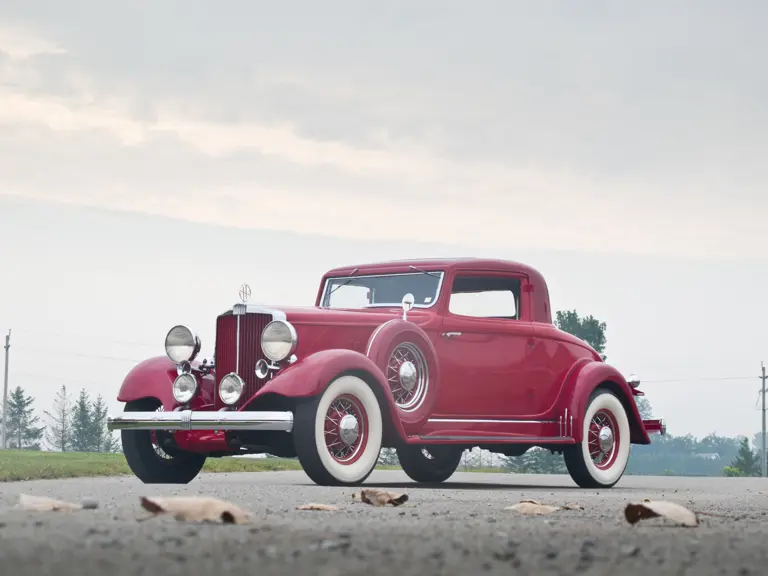
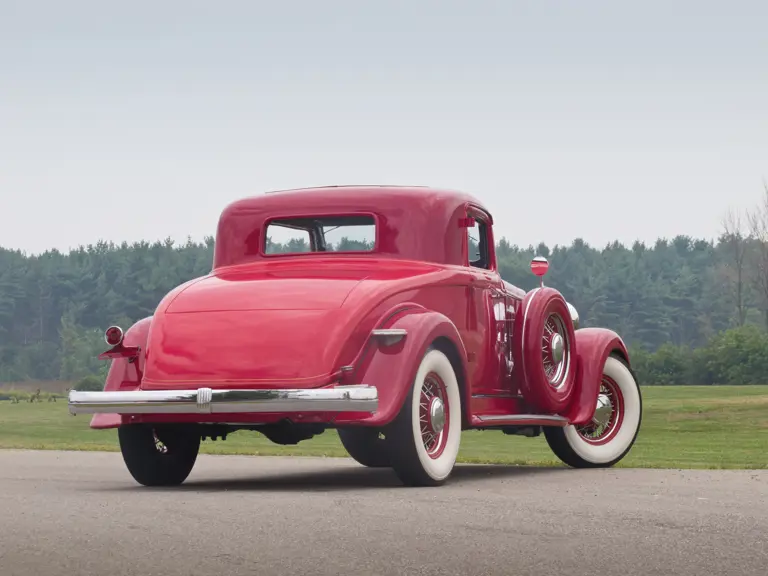
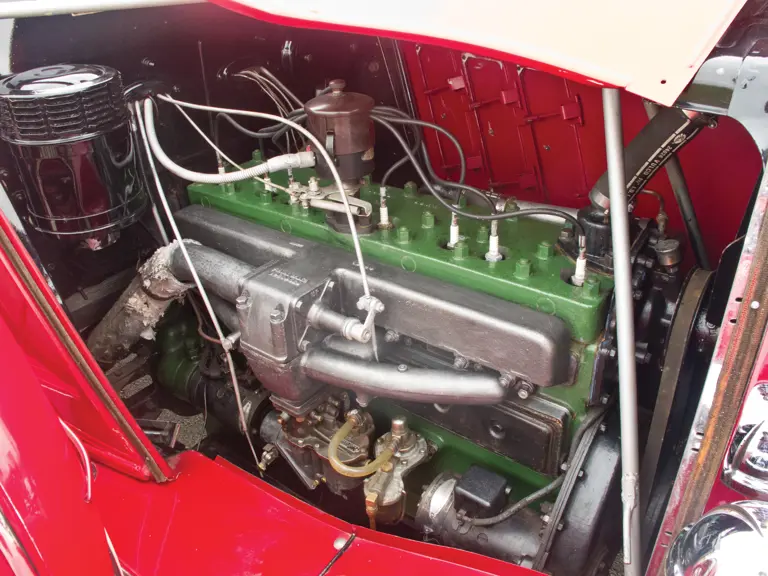

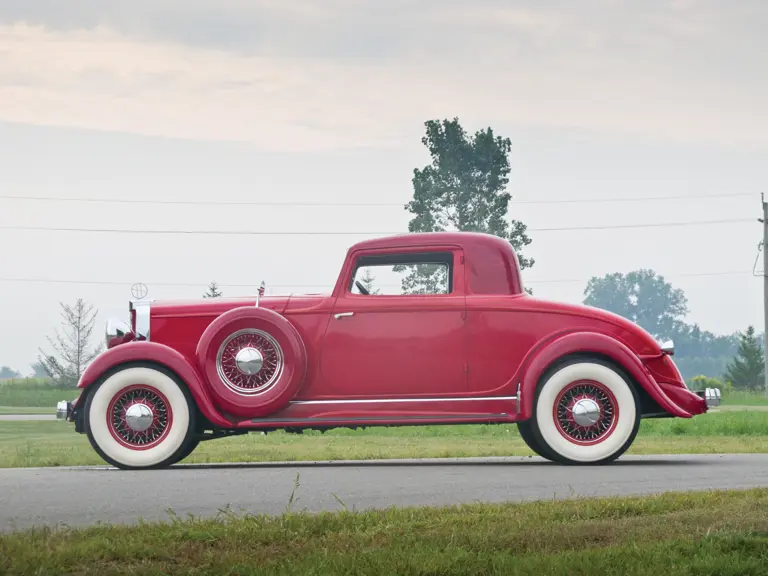
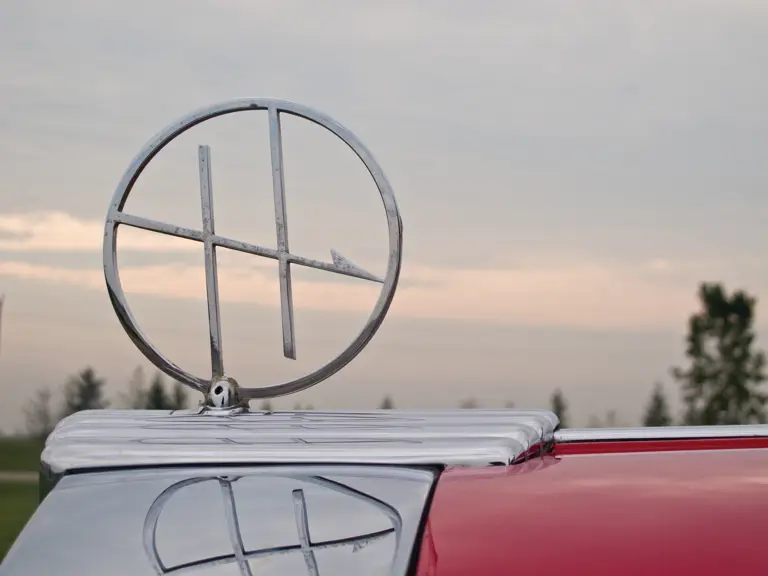


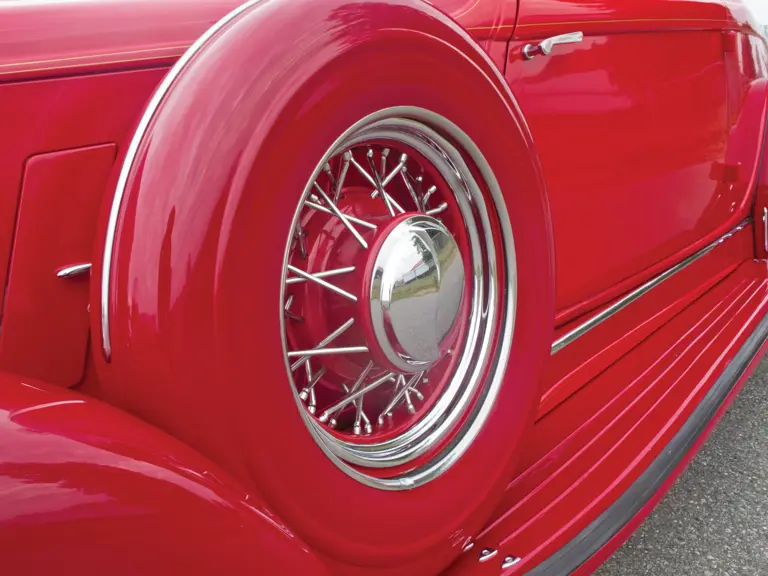
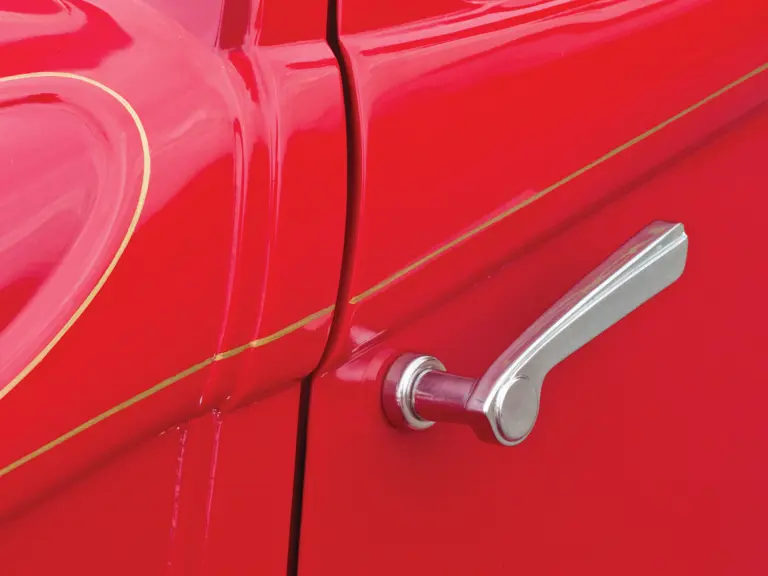
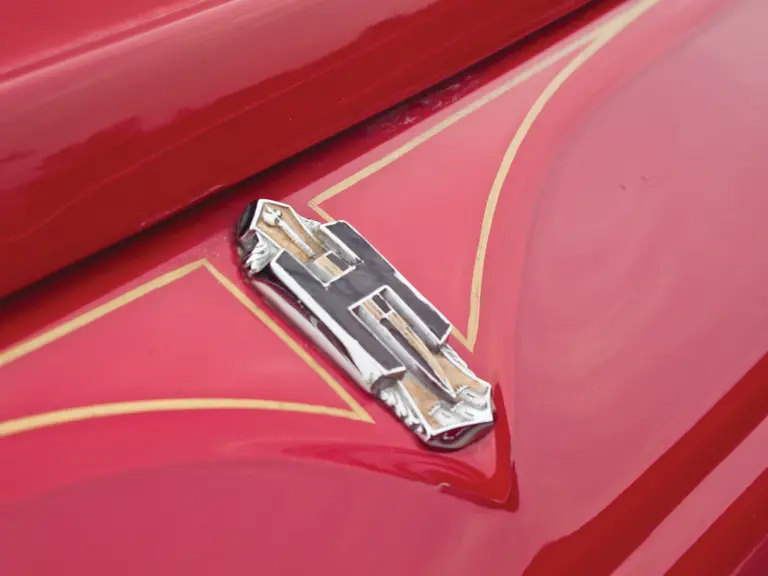
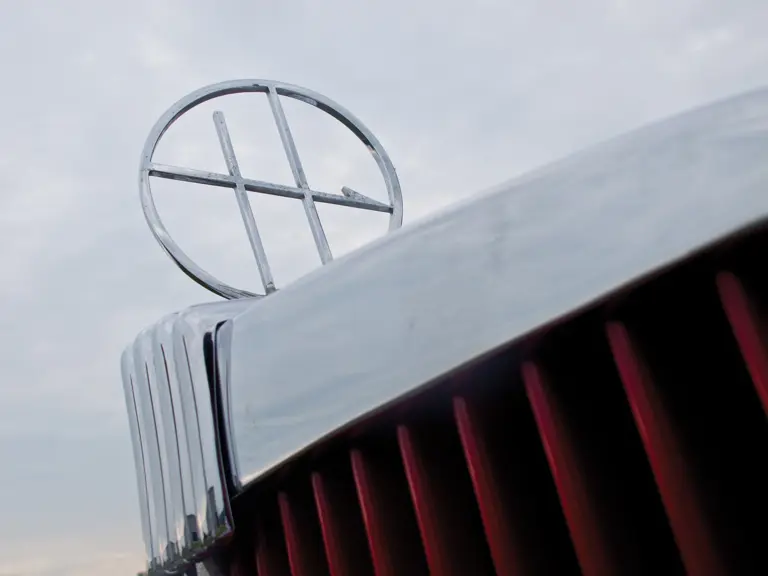
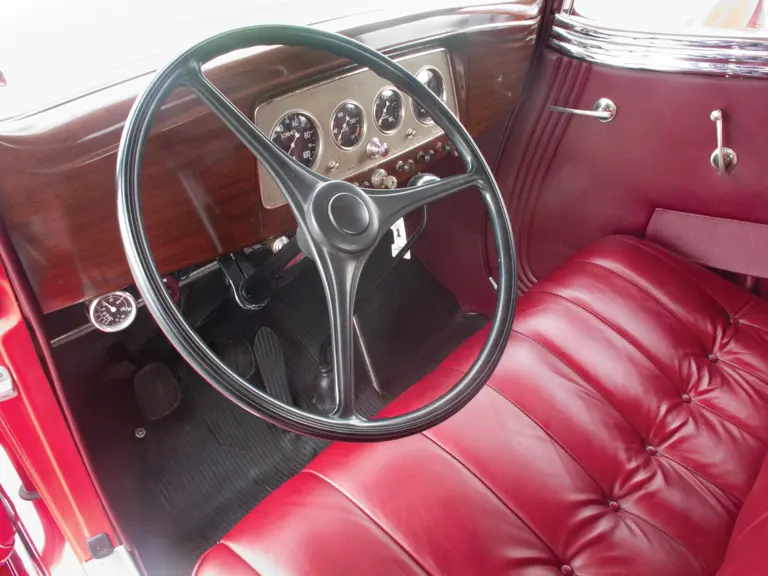
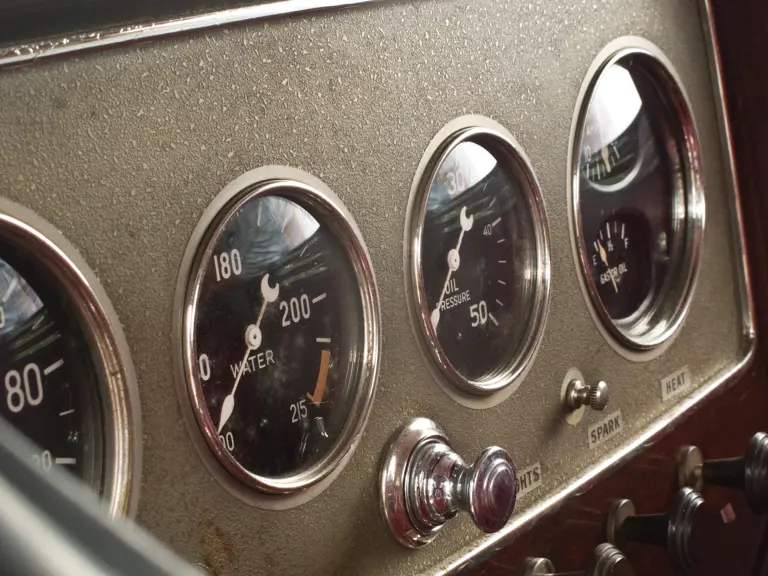
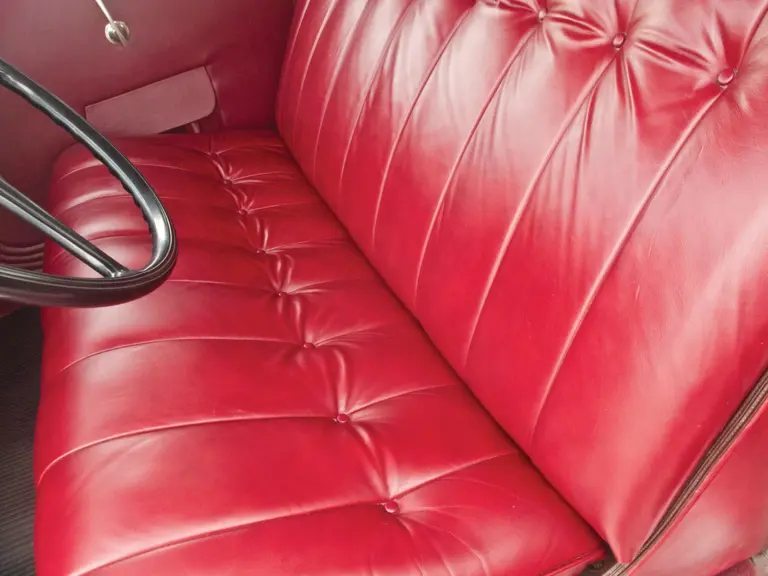

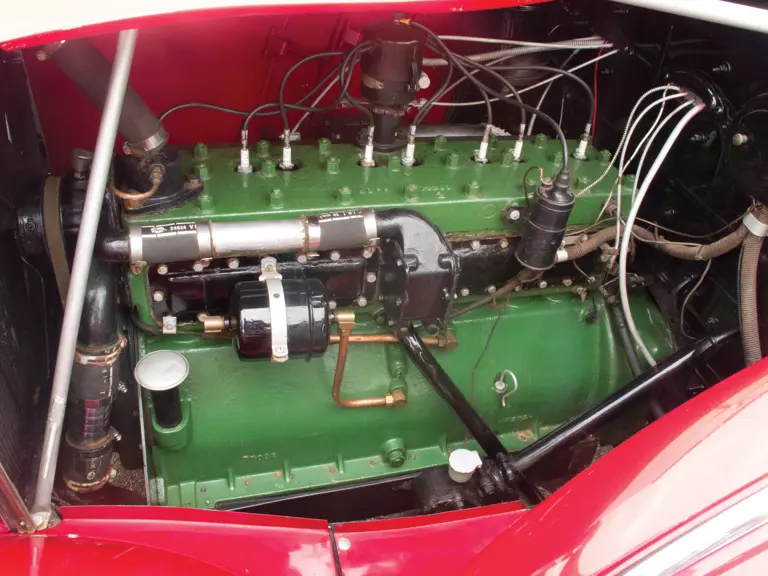
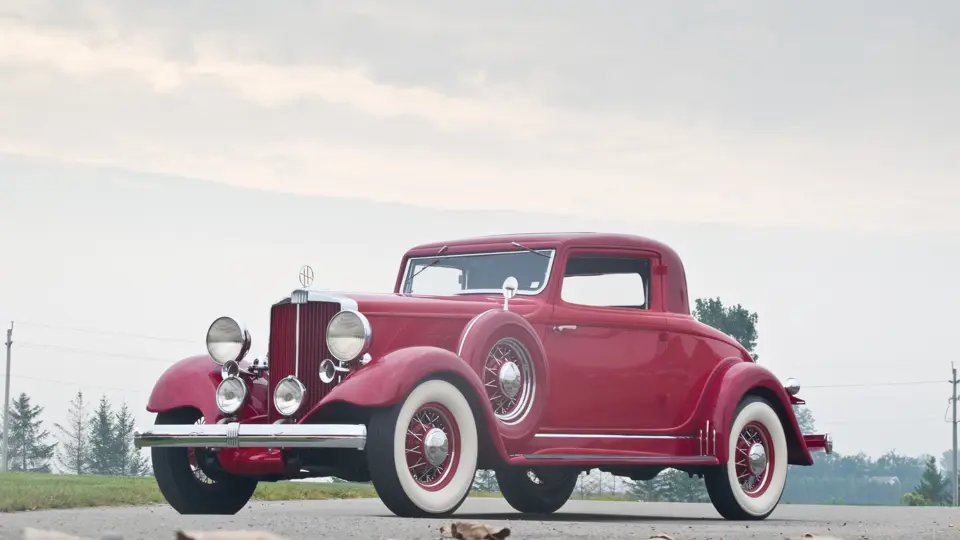
 | Hershey, Pennsylvania
| Hershey, Pennsylvania
